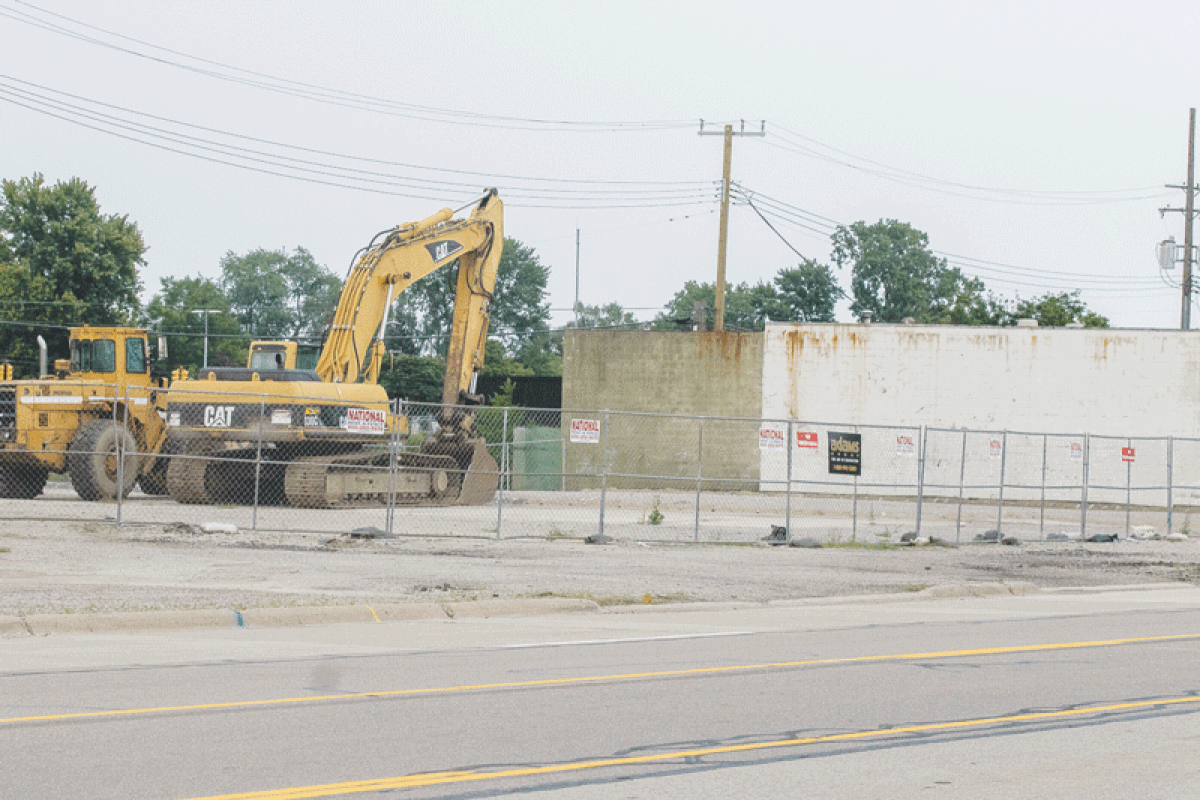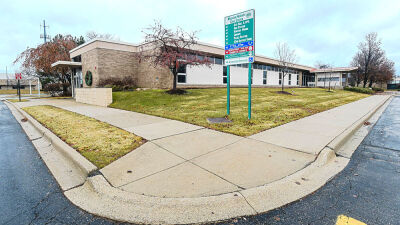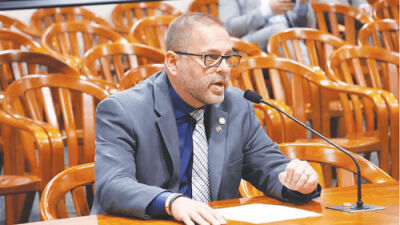MADISON HEIGHTS — The site of the shuttered Electro-Plating Services is advancing toward full remediation. The city of Madison Heights has snapped up the remaining parcels, and officials are talking about its potential for redevelopment as early as next year.
The factory that once existed there was the source of the “green ooze” that thrust the city into the national spotlight in 2019. Green groundwater, laced with cancer-causing hexavalent chromium, gushed onto Interstate 696 that winter, leading to a massive cleanup effort.
The addresses are all on East 10 Mile Road: 901, 925, 935, 945 and 959. The last two parcels — 945 and 959 — were purchased by Madison Heights through the county’s tax foreclosure process, using $54,500 in reserve funds. The deal was approved by the City Council in a 7-0 vote on July 10. The other three parcels — 901, 925 and 935 — were awarded to the city through a court order in March.
The plan is to prime the property for redevelopment. Any proceeds from a sale will be used to reimburse the city, county and state for the cost of demolishing buildings and curing the site.
“I really look forward to the day residents can walk by the property and see something else,” said Madison Heights Mayor Roslyn Grafstein. “For so long, this condemned site has been an eyesore in the community.”
Melissa Marsh, the city manager, said that the city received two grants to restore the property: a $600,000 grant from the state, and $150,000 from Oakland County. The money was used to demolish the buildings at 901, 945 and 959 E. 10 Mile Road.
“Work is anticipated to be completed by the end of the calendar year,” Marsh said via email. “Now that the building is removed from 945 and 959, the final remediation process can begin.”
Groups at all levels of government worked together to reach this point. The cleanup has been led by the U.S. Environmental Protection Agency and the Michigan Department of Environment, Great Lakes and Energy.
In the years after the leak, officials assured the public that the area’s drinking water had not been affected. The drinking water is channeled through impervious pipes under high pressure from a sealed municipal source. The contaminants rolled downhill toward the highway, away from homes and businesses. While some of it went into the drains on I-696, those drains were vacuumed. Anything that made it downstream to Lake St. Clair would have been very diluted.
But there remained the matter of Electro-Plating Services, where the owner, Gary Sayers, had illegally dumped chemicals in a hand-dug pit in the basement. Those toxins leached into the earth and mixed with groundwater, creating the ooze.
The business was already shut down by regulators in November 2016. That order followed a joint inspection between the city and state, which discovered more than 5,000 containers of hazardous materials. Many barrels were improperly stored, unlabeled, open or corroded. There were spills throughout the factory, and waste stockpiled in disarray, including flammable items.
The building itself was severely dilapidated. Blocked exits posed fire hazards to workers, and unsecured entry points left it open to vandals. At the time, there was also a risk that the combination of cyanide and hydrochloric acid on-site, together with large amounts of water, could produce a highly toxic cloud of hydrogen cyanide.
The building was within 500 feet of residential neighborhoods, and within one mile of the intersection of I-696 and Interstate 75. Those roads serve 350,000 vehicles per day. It’s also near day care centers, schools and senior living facilities.
In November 2019, Sayers was convicted for the illegal storage of hazardous chemicals and sentenced to one year in federal prison. He served part of his sentence at the Morgantown Federal Correctional Institute in West Virginia. He was then sentenced to home confinement and ordered to pay $1.4 million in restitution.
City officials say they see a bright future for the site.
“Ideally, the city would sell these properties for redevelopment,” Marsh said. “This is an ideal location off I-696 for various uses that the city will explore in the months to come. The city is very open to working with private developers on the future use of the site.”
The mayor said she’s excited for what’s next.
“Now the site has been cleaned up, and it’s so much better. We’re making progress owning it, and getting it ready to be sold,” Grafstein said. “It’s a great location, near restaurants, manufacturing — even Amazon is nearby. It’s close to Warren, right on the edge of the county. My hope is we will sell it to someone who brings in business that really benefits the city.”
 Publication select ▼
Publication select ▼




















